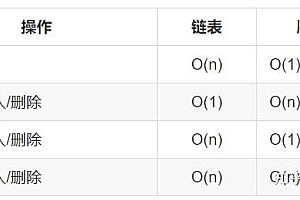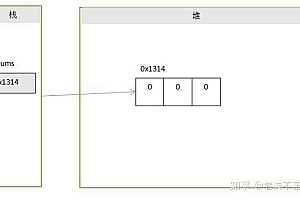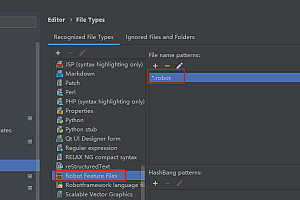种类
传统方式下,JavaScript通过构造函数实现类的概念,通过原型链实现继承。 在 ES6 中,我们终于有了类。
除了实现 ES6 中类的所有功能之外,TypeScript 还添加了一些新的用法。
本节主要介绍类的用法,下一节将介绍如何定义类的类型。
阶级的概念
虽然JavaScript中有类的概念,但是大多数JavaScript程序员可能对类不是很熟悉。 这里简单介绍一下类相关的概念。
ES6 中类的使用
我们先回顾一下ES6中类的用法,更详细的介绍可以参考它。
属性和技能
使用class来定义类,使用constructor来定义构造函数。
当new生成一个新的实例时,会手动调用构造函数。
class Animal {
name;
constructor(name) {
this.name = name;
}
sayHi() {
return `My name is ${this.name}`;
}
}
let a = new Animal('Jack');
console.log(a.sayHi()); // My name is Jack
类继承
使用extends关键字实现继承typescript 类定义,在子类中使用super关键字调用父类的构造函数和技巧。
class Cat extends Animal {
constructor(name) {
super(name); // 调用父类的 constructor(name)
console.log(this.name);
}
sayHi() {
return 'Meow, ' + super.sayHi(); // 调用父类的 sayHi()
}
}
let c = new Cat('Tom'); // Tom
console.log(c.sayHi()); // Meow, My name is Tom
存取器
使用 getter 和 setter 来更改形式参数和属性的读取行为:
class Animal {
constructor(name) {
this.name = name;
}
get name() {
return 'Jack';
}
set name(value) {
console.log('setter: ' + value);
}
}
let a = new Animal('Kitty'); // setter: Kitty
a.name = 'Tom'; // setter: Tom
console.log(a.name); // Jack
静态方法
使用static修饰符的方式称为静态方式,它们不需要实例化,而是直接通过类调用:
class Animal {
static isAnimal(a) {
return a instanceof Animal;
}
}
let a = new Animal('Jack');
Animal.isAnimal(a); // true
a.isAnimal(a); // TypeError: a.isAnimal is not a function
ES7 中类的使用
ES7 中有一些关于类的提案,TypeScript 也实现了它们。 这里简单介绍一下。
实例属性
在ES6中,实例属性只能通过构造函数中的this.xxx来定义。 在ES7提案中,它们可以直接在类上定义:
class Animal {
name = 'Jack';
constructor() {
// ...
}
}
let a = new Animal();
console.log(a.name); // Jack
静态属性
在ES7提案中,可以使用static来定义静态属性:
class Animal {
static num = 42;
constructor() {
// ...
}
}
console.log(Animal.num); // 42
TypeScript 中类的使用 public private 和 protected
TypeScript 可以使用三种访问修饰符(Access Modifiers),即 public、private 和 protected。
这里有些例子:
class Animal {
public name;
public constructor(name) {
this.name = name;
}
}
let a = new Animal('Jack');
console.log(a.name); // Jack
a.name = 'Tom';
console.log(a.name); // Tom
在上面的示例中,name 设置为 public,因此允许直接访问实例的 name 属性。
很多时候,我们希望有些属性很难直接访问。 在这种情况下,我们可以使用私有:
class Animal {
private name;
public constructor(name) {
this.name = name;
}
}
let a = new Animal('Jack');
console.log(a.name);
a.name = 'Tom';
// index.ts(9,13): error TS2341: Property 'name' is private and only accessible within class 'Animal'.
// index.ts(10,1): error TS2341: Property 'name' is private and only accessible within class 'Animal'.
需要注意的是,TypeScript 编译的代码并不限制私有属性的外部可访问性。
上面例子的编译后的代码是:
var Animal = (function () {
function Animal(name) {
this.name = name;
}
return Animal;
})();
var a = new Animal('Jack');
console.log(a.name);
a.name = 'Tom';
用 private 修饰的属性或方法不允许在基类中访问:
class Animal {
private name;
public constructor(name) {
this.name = name;
}
}
class Cat extends Animal {
constructor(name) {
super(name);
console.log(this.name);
}
}
// index.ts(11,17): error TS2341: Property 'name' is private and only accessible within class 'Animal'.
而如果用protected修饰的话,就允许在泛型中访问:
class Animal {
protected name;
public constructor(name) {
this.name = name;
}
}
class Cat extends Animal {
constructor(name) {
super(name);
console.log(this.name);
}
}
当构造函数修改为private时,该类不允许被继承或实例化:
class Animal {
public name;
private constructor(name) {
this.name = name;
}
}
class Cat extends Animal {
constructor(name) {
super(name);
}
}
let a = new Animal('Jack');
// index.ts(7,19): TS2675: Cannot extend a class 'Animal'. Class constructor is marked as private.
// index.ts(13,9): TS2673: Constructor of class 'Animal' is private and only accessible within the class declaration.
当构造函数被修改为protected时,该类只允许被继承:
class Animal {
public name;
protected constructor(name) {
this.name = name;
}
}
class Cat extends Animal {
constructor(name) {
super(name);
}
}
let a = new Animal('Jack');
// index.ts(13,9): TS2674: Constructor of class 'Animal' is protected and only accessible within the class declaration.
参数属性
构造函数参数中也可以使用修饰符和readonly,相当于在类中定义了属性,给属性赋予了形参,让代码更加简洁。
class Animal {
// public name: string;
public constructor(public name) {
// this.name = name;
}
}
只读
只读属性关键字只允许出现在属性声明或索引签名或构造函数中。
class Animal {
readonly name;
public constructor(name) {
this.name = name;
}
}
let a = new Animal('Jack');
console.log(a.name); // Jack
a.name = 'Tom';
// index.ts(10,3): TS2540: Cannot assign to 'name' because it is a read-only property.
注意,如果readonly和其他访问修饰符同时存在typescript 类定义,则需要将它们写在它们的旁边。
class Animal {
// public readonly name;
public constructor(public readonly name) {
// this.name = name;
}
}
Abstract 用于定义抽象类及其内部的表示技术。
什么是抽象类?
首先,抽象类是不允许被实例化的:
abstract class Animal {
public name;
public constructor(name) {
this.name = name;
}
public abstract sayHi();
}
let a = new Animal('Jack');
// index.ts(9,11): error TS2511: Cannot create an instance of the abstract class 'Animal'.
在上面的例子中,我们定义了一个抽象类Animal和一个具体方法sayHi。 实例化抽象类时报错。
其次,抽象类中的具体方法必须通用实现:
abstract class Animal {
public name;
public constructor(name) {
this.name = name;
}
public abstract sayHi();
}
class Cat extends Animal {
public eat() {
console.log(`${this.name} is eating.`);
}
}
let cat = new Cat('Tom');
// index.ts(9,7): error TS2515: Non-abstract class 'Cat' does not implement inherited abstract member 'sayHi' from class 'Animal'.
上面的例子中,我们定义了一个继承抽象类Animal的类Cat,但是没有实现具体方法sayHi,所以报了编译错误。
这是正确使用抽象类的示例:
abstract class Animal {
public name;
public constructor(name) {
this.name = name;
}
public abstract sayHi();
}
class Cat extends Animal {
public sayHi() {
console.log(`Meow, My name is ${this.name}`);
}
}
let cat = new Cat('Tom');
上面的例子中,我们实现了具体方法sayHi,并且编译通过了。
需要注意的是,即使在具体模式下,该类仍然会存在于 TypeScript 的编译结果中。 上述代码的编译结果为:
var __extends =
(this && this.__extends) ||
function (d, b) {
for (var p in b) if (b.hasOwnProperty(p)) d[p] = b[p];
function __() {
this.constructor = d;
}
d.prototype = b === null ? Object.create(b) : ((__.prototype = b.prototype), new __());
};
var Animal = (function () {
function Animal(name) {
this.name = name;
}
return Animal;
})();
var Cat = (function (_super) {
__extends(Cat, _super);
function Cat() {
_super.apply(this, arguments);
}
Cat.prototype.sayHi = function () {
console.log('Meow, My name is ' + this.name);
};
return Cat;
})(Animal);
var cat = new Cat('Tom');
班级类型
将 TypeScript 类型添加到类中很容易,类似于套接字:
class Animal {
name: string;
constructor(name: string) {
this.name = name;
}
sayHi(): string {
return `My name is ${this.name}`;
}
}
let a: Animal = new Animal('Jack');
console.log(a.sayHi()); // My name is Jack
参考














